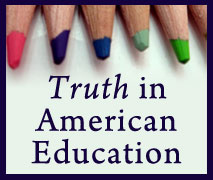What are schools using for informational text?
The debate about the increase in informational text through the Common Core and whether it will improve students’ college and career readiness continues in education circles across the country. With Common Core currently being implemented, we now get a chance to see what that looks like in the classroom. In my opinion, it looks like a chopped salad with a little bit of everything.
Denise Smith Amos in Cincinnati.com gave a first hand account of how teachers were incorporating non-fiction into the classroom. It seems complex-informational text which prepares students for college means different things to different people.
“Johnny Rosa, a 15-year-old sophomore, is usually a sci-fi and mythology fan, he says. He calls the Star Wars books “classic” fiction. But he recently enjoyed reading news accounts of people who consider themselves vampires in Serbia.”
Say what, Star Wars is classic literature? I’m guessing that newspaper articles on self-proclaimed vampires in Serbia is an example of what the Common Core considers complex, informational text for a sophomore? Newspapers are generally written at an eighth-grade level. Thank God the teacher didn’t waste his time on true Greek mythology, it would have dumbed him down. The article continues;
“Cristina Valdiva, a West Chester sophomore, said she loved reading MacBeth because “it was a little twisted,” but she also enjoyed recent articles on President Obama and the recently injured basketball player Kevin Ware.”
Well, this is much better than vampire confessions. I mean, who wouldn’t consider Sports Illustrated and Time Magazine complex text with important content materials that will increase students vocabulary and ability to read college-level material? I think I remember Sports Illustrated being on the required reading list for my Y103 class freshmen year.
I think we should be very weary of teachers throwing anything and everything into our child’s curriculum. There should be a logical, well sequenced order to text selections that increase with complexity to help form a coherent reading list that teachers are able to follow.










The Washington Post and others are written at a complexity level beyond the levels of college graduates. Furthermore, it is HOW students are taught to read texts more than the text itself. Can I student identify bias, identify a central theme, or define terms based on context? We are teaching skills, not topics or text.